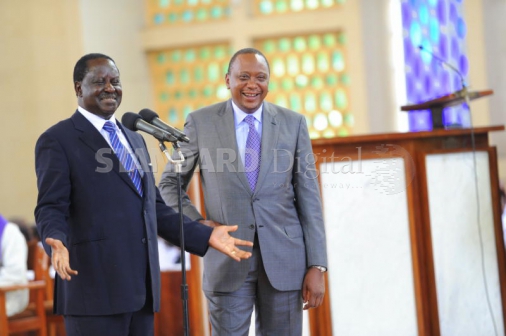×
The Standard e-Paper
Home To Bold Columnists

President Uhuru Kenyatta’s Jubilee Party and RailaOdinga’s NASA have cobbled a campaign machinery to get an advantage in 11 counties that could determine who will become Kenya’s President on August 8.
Both sides are armed with facts and figures showing they must now concentrate on getting a majority of 3.7 million votes from the swing counties, even as the parties work on ensuring their strongholds remain tightly within their grasp.